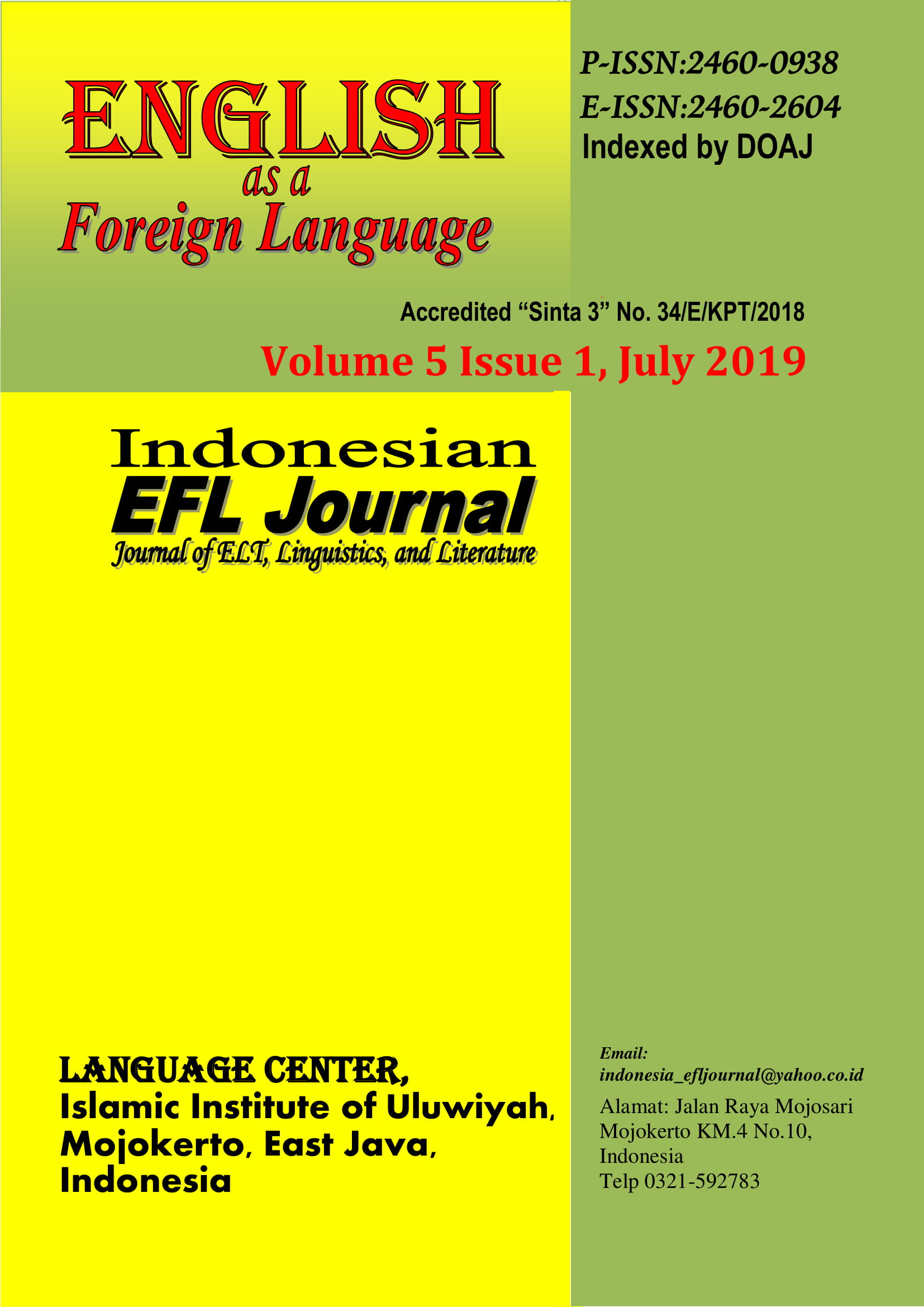The Use of Google Classroom Application for Writing and Speaking in English Education Class
Abstract
The development of application in smartphone makes people use it in the process of teaching and learning activities. This research aims to discover students’ lived experience of using Google Classroom application as the media for submitting English assignments in the form of writing and speaking. The method used in this research was hermeneutic-phenomenology study. It focuses on description and interpretation of lived experience. The instruments used are in-depth interview, observation, and document review. The findings are distributed into empirical themes and transcendent themes. Based on the research, Google Classroom enhances writing and speaking skills in the form of assignments.
References
Alvesson, M. & Skoldberg, K. (2000). Reflexive Methodology: New Vistas for Qualitative Research. London: SAGE Publication.
Azhar, K.A. & Iqbal, N. (2018). Effectiveness of Google Classroom: Teachers’ Perceptions. Prizren Social Science Journal, 2(2):52-66. Retrieved from http://prizrenjournal.com/index.php/PSSJ/article/view/39/24.
Brown, H.G. (2007). Principles of Language Learning and Teaching( fifth edition). New York: Pearson Education, Inc.
Brown, H.G. (2007). Teaching by Principles: An Interactive Approach to Language Pedagogy (third edition). New York: Pearson Education, Inc.
Campbell, E. (2008). Teaching and Learning through Lived Experience. Curriculum Inquiry. 38(1): 1-5. Retrieved from http://www.jstor.org/stable/30054720.
Celce-Muria, M. (2001). Teaching English as a Second or Foreign Language (third edition). United States: Thomson Learning.
Creswell, J. W. (2012). Educational Research: Planning, Conducting, and Evaluating Quantitative and Qualitative Research (fourth edition). Boston: Pearson Education, Inc.
Dudeney, G & Hockly, N. (2007). How to Teach English with Technology. Essex: Pearson Education Limited.
Harmer, J. (2001). The Practice of English Language Teaching. Cambridge: Longman.
Heggart, K.R. & Yoo, J. (2018). Getting the Most from Google Classroom: A Pedagogical Framework for Tertiary Educators. Australian Journals of Teacher Education, 43(3): 140-153. Retrieved from http://ro.ecu.edu.au/ajte/vol43/iss3/9.
Iftakhar, S. (2016). Google Classroom: What Works and How? Journal of Education and Social Sciences, 3(1): 12-18. Retrieved from https://www.jesoc.com/wp-content/uploads/2016/03/KC3_35.pdf.
Shaharanee, I.N., Jamil, J.M., & Rodzi, S.S.M. (2016). The Application of Google Classroom as a Tool for Teaching and Learning. Journal of Telecommunication, Electronic, and Computer Engineering, 8(10): 5-8. Retrieved from http://journal.utem.edu.my/index.php/jtec/article/view/1357/882.
Thornbury, S. (2005). How To Teach Speaking. Essex: Pearson Education Limited.
Tiedt, I.M. (1989). Writing From Topic to Evaluation. Boston: Allyn and Bacon.
Van Manen, M. (1990). Researching Lived Experience: Human Science for an Action Sensitive Pedagogy. Canada: The University of Western Ontario.
Copyright (c) 2019 Indonesian EFL Journal: Journal of ELT, Linguistics, and Literature

This work is licensed under a Creative Commons Attribution-ShareAlike 4.0 International License.
All rights reserved.
this publication may be reproduced, stored in a retrieval system, or transmitted
in any form or by any means, electronic, mechanical, photocopying, recording.




